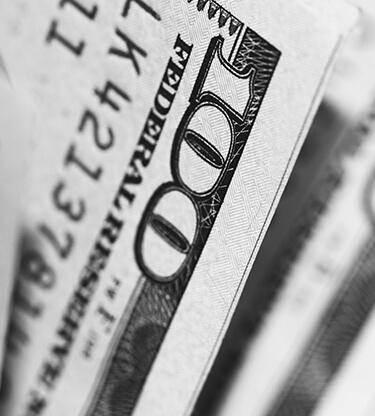Daily Market Pulse

Fed James Bullard urged policymakers to raise interest rates aggressively
6 minute readUSD
Yesterday, the DXY, which measures the greenback against a basket of major currencies, advanced 0.73% on the back of firmer US data which allowed market players to bet on further Fed rate hikes. The US ISM Manufacturing PMI for April rose to 56.1 versus the 54.5 expected and the 55.4 prior. Furthermore, the US JOLTs Job Openings eased below 11.8 prior readings. The strong data also pushed U.S. Treasury yields to trade higher on Wednesday, with the 10-year note negotiated at 2.91%. Early today, the USD eases amid the return of risk appetite, as investors assess the Fed tightening cycle ahead of the ADP U.S. jobs data and non-farm payrolls tomorrow.
EUR
Similar to other major currencies, the common currency also slid (-0.78%) against the greenback yesterday. The narrative around the currency is still the same - how big will be the size of the first interest rate hike in the Euro-area after ten years. Investors and traders are cautious and looking forward to European Central Bank´s post-meeting press conference on June 9, 2022. On that note, ECB may update its macro forecasts, cutting its economic growth estimates and lifting inflation figures for 2022. This morning, the EUR/USD pair is trading in positive territory, recovering previous losses as it picks up fresh bids on improving the market mood.
GBP
Amid the all-important Jubilee weekend, market participants will stay tuned to macro readings in the U.S. The Pound also negotiated lower in the previous trading session, as positive US data leaves policymakers on track to continue its tightening cycle. This morning the Pound is pushing higher ahead of US job data which will be published later today and might set the risk tone for the remaining trading session. Also, as banks remain closed in the U.K. liquidity will be reduced today and tomorrow which may spark some market volatility.
JPY
The Japanese Yen fell 1.13% to a three-week low on Wednesday, amid a strong USD demand driven by Treasury yields moving higher. The movement in bonds followed comments from St Louis Fed President James Bullard who urged policymakers to raise interest rates aggressively to pull back inflation near a four-decade high. However, overnight, the yen has traded steadily as traders awaited today's ADP US jobs data, as well as non-farm payrolls tomorrow for clues on the outlook from Fed rate hikes. Meanwhile, against the global trend, Bank of Japan board member Seiji Adachi said it’s too early to adjust policy toward a tightening direction, as it could create significant downward pressure on households and businesses amid the ongoing recovery from the Covid pandemic.
CAD
Yesterday, the Loonie was down 0.08% against the US counterpart, but it remains near a one-month high after the Bank of Canada raised its benchmark rate by 50bps as well as announced the start of passive Quantitative Tightening from the end of April by ending its reinvestment of maturing bonds. In addition, the bank upgraded both inflation and GDP estimates (as expected) but did play a hawkish tone by also increasing their neutral rate estimate to 2.5% from 2.25%. BoC officials recognized the growing risks due to the current geopolitical situation and made it very clear that they are closely monitoring inflation and their latest hike showed that they think that policy needs to be normalized quickly.
MXN
The Mexican peso showed small losses (-0.2%) against the USD on Wednesday, as the international headlines weighed the emerging currencies, including the peso. At the same time, local news also did not help the currency as Mexico´s central bank (Banxico) lowered its growth outlook for 2022 to 2.2% in its central scenario, down from 2.4% previously. Nonetheless, Banxico maintained its inflation outlook, seeing inflation in 4Q22 at 6.4% and at 3.1% in 1Q 2024. On the monetary front, a faster increase in the interest rate is on the table to fight inflation, which should give sustentation to the MXN due to the interest rate differential between Mexico and the U.S, according to Governor of Banxico Victoria Rodríguez Ceja.
CNY
The Chinese Yuan slid against the U.S. Dollar on Wednesday, amid concern the Fed’s aggressive policy tightening could last longer. Following the minutes from the last FOMC meeting which confirmed that the hawkish and dovish wings of the Fed ratified their determination to raise interest rates, yesterday Fed of St. Louis President James Bullard asked policymakers to raise interest rates to bring down US inflation. On the radar, the Chinese government ordered state-owned policy banks to set up an 800 billion yuan line of credit for infrastructure projects as it leans on construction to stimulate an economy battered by recent Covid strict restrictions. Overall, market participants are pricing in a confluence of factors, such as interest rate differentials that continue to shift against the CNY; China's economy is disheartened despite government stimulus; China's external balance remains weak.
BRL
Yesterday, the Brazilian Real dropped 1.69% against the greenback, in tandem with other emerging market currencies and reflecting a strong USD demand as yields moved higher with 10yrs gaining 9bps. Furthermore, US ISM data came in strong on all fronts and helped to push higher the USD. Looking ahead, today the highlight will be the local GDP data for Q1, which is expected to come in at 1.2% QoQ vs. 0.5% prior. Although it is an “old” data, the GDP number may give some support to the BRL because it is expected to show a more vigorous economy at the beginning of the year.

